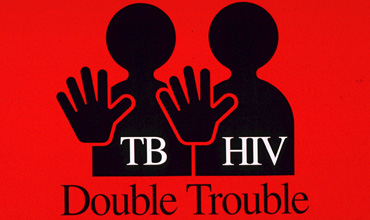The Double Burden of TB and HIV Co-Infection in Sub Saharan Africa

Abstract:
Tuberculosis
as a disease have been with human for several thousands of years now and
earliest evidence of the disease is said to have been found in a Bison dating
back 17,000 years. However, the bacillus causing the disease was identified by
Robert Koch in 1882.
Tuberculosis
is caused by Mycobacterium
tuberculosis; an aerobic bacillus [1]. It has very high lipid content in
its cell wall and this is responsible for its unique clinical features [1]. The
M. tuberculosis complex
includes five species: M.
tuberculosis, M. bovis (and bacillus Calmette-Guérin), M. canetti, M. africanum, and M. microti. Within the species
complex, most human disease is due to M.
tuberculosis sensu stricto. Important to note is M. bovis; it accounts for a small fraction of human TB cases and
is naturally resistant to the drug pyrazinamide [1]
References:
1. Cantwell MF, Mckenna MT, McCray E, Onorato IM.
Tuberculosis and race/ethnicity in United States: impact of socioeconomic
status. Am J Respir Crit Care Med. 1998;157:1016–20.[PubMed]
2. Chadha VK. Progress towards Millennium Development
Goals for TB control in seven Asian countries. Indian J Tuberc.
2009;56:30–43.[PubMed]
3. Daley C. L. Tuberculosis Recurrence in Africa: True
Relapse or Re-infection? Lancet. 1993;342:756–57 [PubMed]
4. Davies PD. Tuberculosis: the global epidemic. J Ind
Med Assoc. 2000;98:100–02.[PubMed]
5. Di Perri G., Cruciani M., Danzi M. C., Luzzati R., De
Checchi G., Malena M., Pizzighella S. et al. Nosocomial Epidemic of Active
Tuberculosis in HIV Infected Patients. Lancet. 1989;2:1502–4.
6. Ewer K., Deeks J., Alvarez L., Bryant G., Waller S.,
Andersen P., Monk P., Lalvani A. Comparison of T-Cell-Based Assay with
Tuberculin Skin Test for Diagnosis of Mycobacterium Tuberculosis Infection in a
School Tuberculosis Outbreak. Lancet. 2003;361:1168–73. [PubMed]
7. Gerald L. Mandell, John E. Bennett, Raphael (2010).
Mandell, Douglas, and Bennett's principles and practice of infectious diseases
(7th ed.). Philadelphia, PA: Churchill Livingstone/Elsevier. pp. Chapter 250.
ISBN 978-0-443-06839-3.
8. Hargreaves N. J., Kadzakumanja O., Phiri S., Lee C.
H., Tang X., Salaniponi F. M., Harries A. D., Squire S. B. What Causes
Smear-Negative Pulmonary Tuberculosis in Malawi, an Area of High HIV
Seroprevalence? International Journal of Tuberculosis and Lung Disease.
2001;5:1–10. [PubMed]
9. Kaye K, Frieden TR. Tuberculosis control: the
relevance of classic principles in an era of acquired immunodeficiency syndrome
and multidrug resistance. Epidemiol Rev. 1996;18:52–63.[PubMed]
10. Kochi A. The global tuberculosis situation and the new
control strategy of the World Health Organization. Tubercle.
1991;71:1–6.[PubMed]
11. Mazurek G. H., Villarino M. E. Guidelines for Using
the QuantiFERON-TB Test for Diagnosing Latent Mycobacterium Tuberculosis
Infection. Morbidity and Mortality Weekly Report. 2003;52(RR-2):15–18. [PubMed]
12. Rieder, H. L. 1999. Tuberculosis Epidemiology. 1st
ed. Paris: IUATLD.
13. Rieder H. L., Cauthen G. M., Comstock G. W., Snider D.
E. Epidemiology of Tuberculosis in the United States. Epidemiologic Reviews.
1989;11:79–98. [PubMed]
14. Richter C., Ndosi B., Mwammy A. S., Mbwambo R. K.
Extrapulmonary Tuberculosis—a Simple Diagnosis? Tropical and Geographical
Medicine. 1991;43:375–78. [PubMed]
15. Spence DP, Hotchkiss J, Williams CSD, Davies PD.
Tuberculosis and poverty. BMJ. 1993;307:759–61.
16. Styblo, K. 1991. Epidemiology of Tuberculosis.
Selected Papers. Vol. 24. The Hague: Royal Netherlands Tuberculosis
Association KNCV.
17. Sutherland I. Recent Studies in the Epidemiology of
Tuberculosis, Based on the Risk of Being Infected with Tubercle Bacilli.
Advances in Tuberculosis Research. 1976;19:1–63. [PubMed]
18. World Health Organization Global tuberculosis control
2009: epidemiology, strategy, financing: WHO report 2009. Geneva: World Health
Organization; 2009. p. 303. (WHO/HTM/TB/2009.411).

